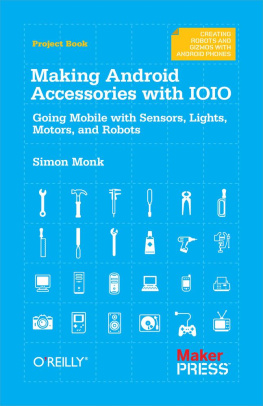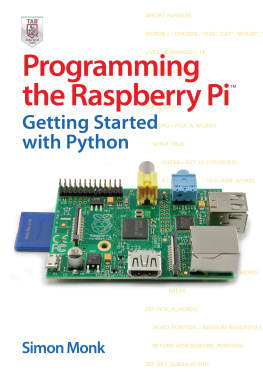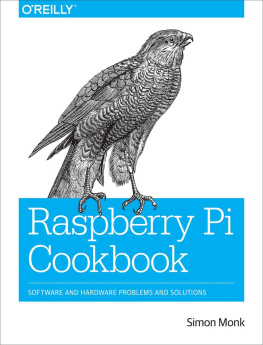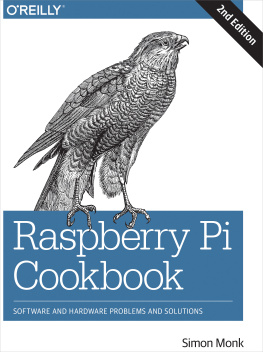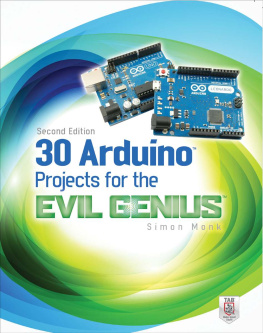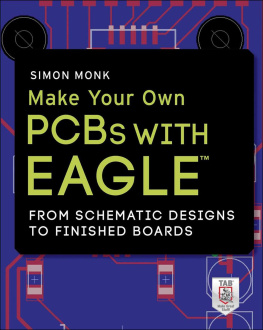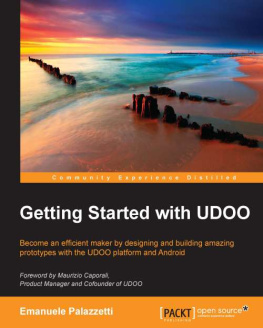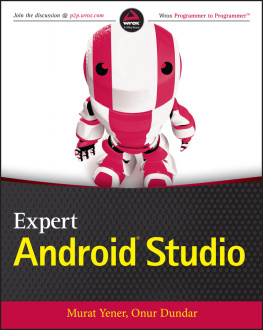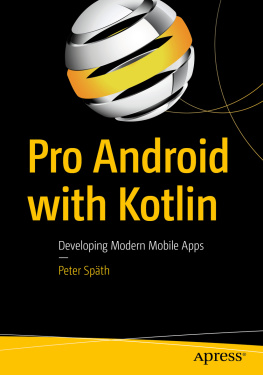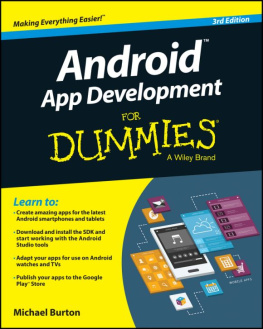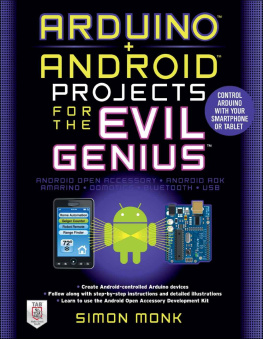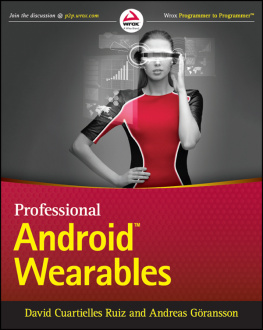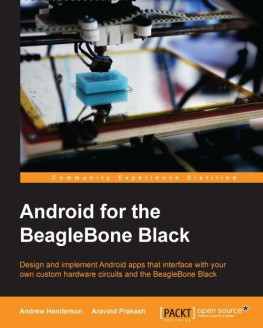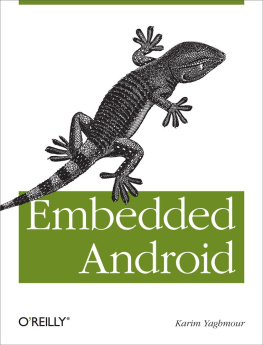Simon Monk - Making Android Accessories with IOIO
Here you can read online Simon Monk - Making Android Accessories with IOIO full text of the book (entire story) in english for free. Download pdf and epub, get meaning, cover and reviews about this ebook. year: 2012, publisher: OReilly Media, genre: Home and family. Description of the work, (preface) as well as reviews are available. Best literature library LitArk.com created for fans of good reading and offers a wide selection of genres:
Romance novel
Science fiction
Adventure
Detective
Science
History
Home and family
Prose
Art
Politics
Computer
Non-fiction
Religion
Business
Children
Humor
Choose a favorite category and find really read worthwhile books. Enjoy immersion in the world of imagination, feel the emotions of the characters or learn something new for yourself, make an fascinating discovery.
- Book:Making Android Accessories with IOIO
- Author:
- Publisher:OReilly Media
- Genre:
- Year:2012
- Rating:4 / 5
- Favourites:Add to favourites
- Your mark:
Making Android Accessories with IOIO: summary, description and annotation
We offer to read an annotation, description, summary or preface (depends on what the author of the book "Making Android Accessories with IOIO" wrote himself). If you haven't found the necessary information about the book — write in the comments, we will try to find it.
Create your own electronic devices with the popular IOIO (yoyo) board, and control them with your Android phone or tablet. With this concise guide, youll get started by building four example projectsafter that, the possibilities for making your own fun and creative accessories with Android and IOIO are endless.
To build Android/IOIO devices, you write the program on your computer, transfer it to your Android, and then communicate with the IOIO via a USB or Bluetooth connection. The IOIO board translates the program into action. This book provides the source code and step-by-step instructions you need to build the example projects. All you have to supply is the hardware.
- Learn your way around the IOIO and discover how it interacts with your Android
- Build an intruder alarm that sends a text message when it detects movement
- Make a temperature sensing device that logs readings on your Android
- Create a multicolor LED matrix that displays a Space Invader animation
- Build an IOIO-powered surveillance rover that you control with your Android
- Get the software and hardware requirements for creating your own Android/IOIO accessories
Simon Monk: author's other books
Who wrote Making Android Accessories with IOIO? Find out the surname, the name of the author of the book and a list of all author's works by series.

